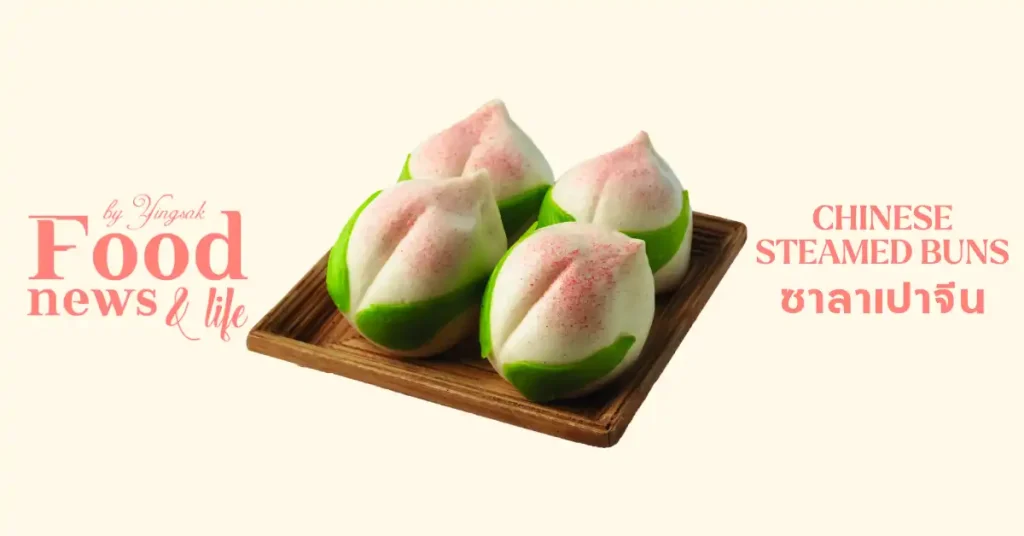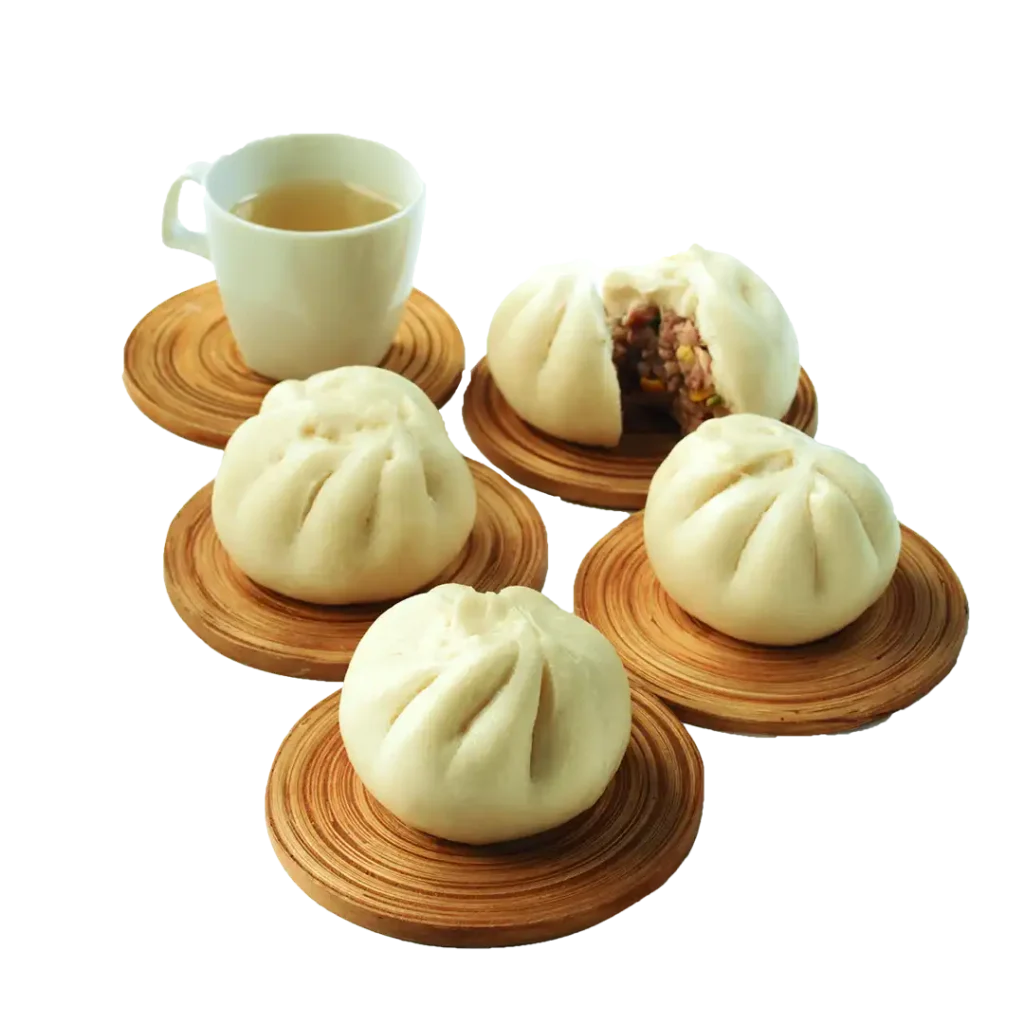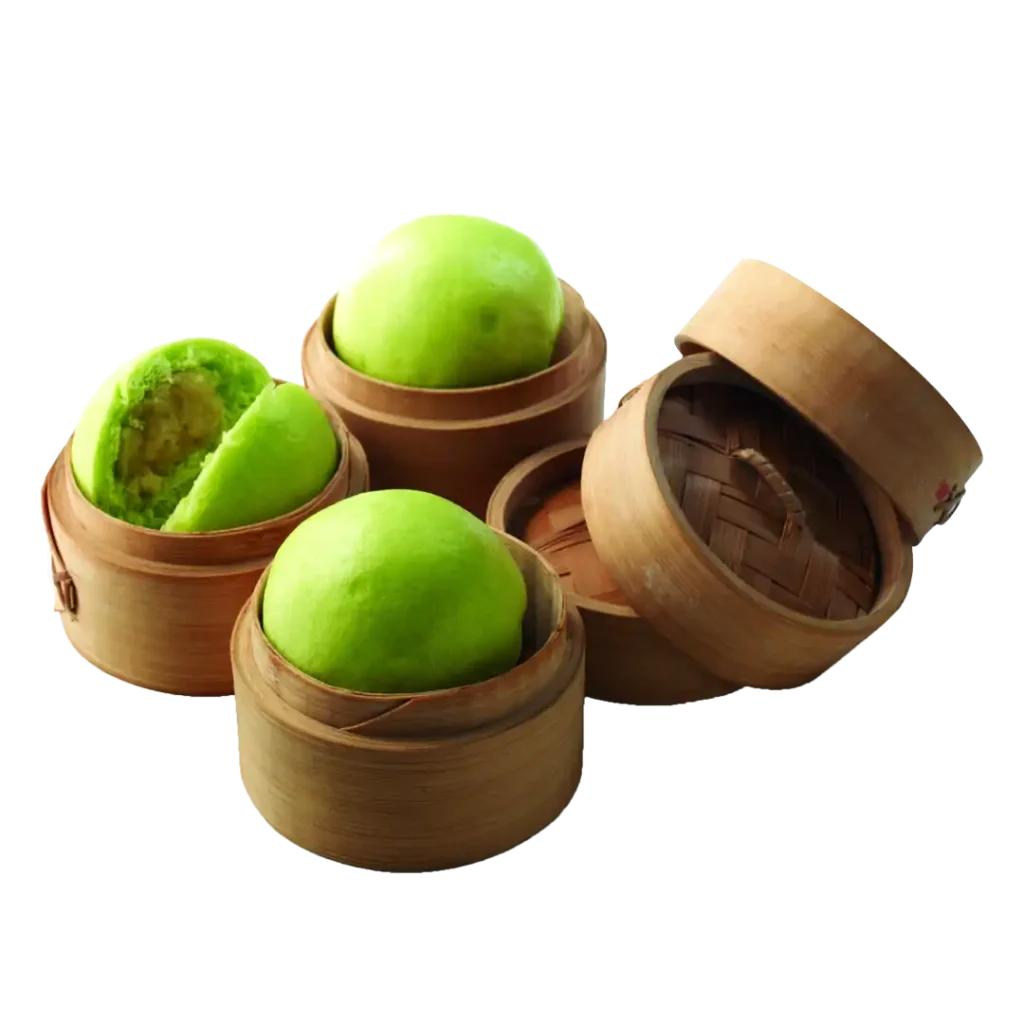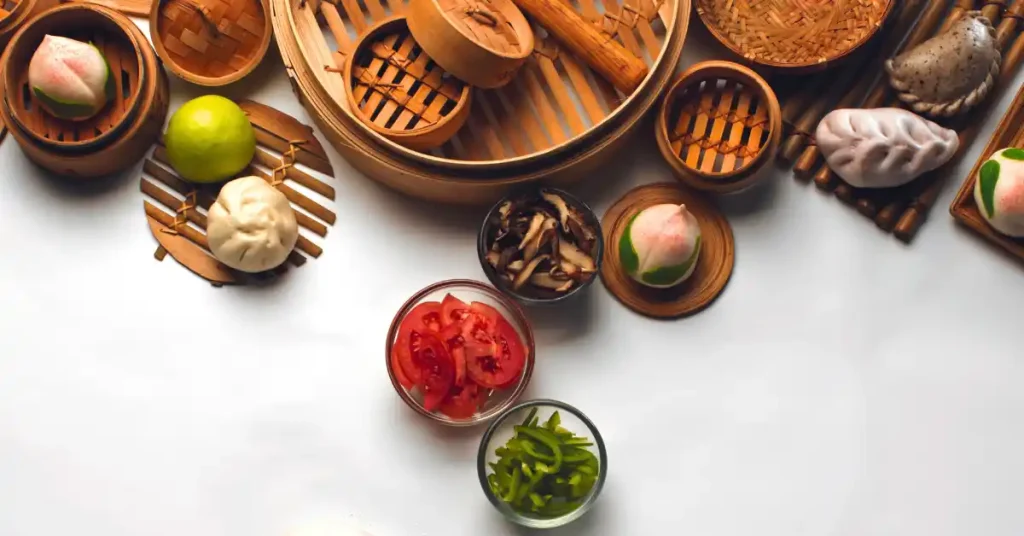Food News & Life
ซาลาเปาจีน
ซาลาเปาจีน White, Smooth and Appetizing…
CHINESE BUNS
ขาวๆ นวลๆ ชวนน้ำลายหก…ซาลาเปา
อุ๊ยตายละ! ที่ตั้งชื่อเรื่องแบบนี้ไม่ได้สื่อความหมายเป็นนัยอื่นนะคะ
แต่ขาวๆ นวลๆ ชวนน้ำลายหกที่พูดถึงเนี่ยคือ ซาลาเปานะคะ หรือ Chinese Bun
ขนมปังสัญชาติจีนที่ได้รับความนิยมอย่างมากในเมืองไทย ถึงขนาดที่ร้านสะดวกซื้อ
หน้าปากซอยจำต้องนำมาวางขายเป็นขนมปังชูโรง และถ้าใครไม่ซื้อก็มักจะถูกถาม
ก่อนออกจากร้านเสมอว่า “รับขนมจีบซาลาเปาเพิ่มไหมคะ”
หากเปิดตำราค้นหาตำนานของซาลาเปาก็คงจะใช้เวลามากกว่าหนึ่งเดือน เพราะซาลาเปาเป็นขนมปังของจีนที่มีประวัติศาสตร์มายาวนาน… มีตำนานหนึ่งได้กล่าวอ้าง
การถือกำเนิดซาลาเปาไว้อย่างยิ่งใหญ่ว่า ซาลาเปาถูกคิดค้นขึ้นมาโดยขงเบ้ง
ในคริสต์ศตวรรษที่ 2 เมื่อขงเบ้งกลับจากการต่อสู้กับเบ้งเฮ็กก็ได้เดินทางมาถึงแม่น้ำแห่งหนึ่งที่มีวิญญาณอยู่ใต้น้ำ ทหารบอกกับขงเบ้งว่า หากจะข้ามฟากจำต้องตัดหัวทหารทั้งหมดเพื่อบูชาดวงวิญญาณ แต่ขงเบ้งไม่คิดทำเช่นนั้น จึงออกอุบายทำหม่านโถวขึ้นมา แล้วปล่อยให้ลอยตามน้ำเพื่อบูชาดวงวิญญาณ จากนั้นขงเบ้งก็พาทหารข้ามสะพานไปยังพระนครเซงโต๋โดยสวัสดิภาพ จึงสันนิษฐานได้ว่าผีที่อยู่ใต้แม่น้ำแห่งนั้นคงรับประทานซาลาเปาอิ่มจนลืมฆ่าเหล่ากองทัพที่เดินข้ามแม่น้ำไป ซึ่งเรื่องทั้งหมดจะจริงหรือไม่ แต่ก็ต้องขอบคุณหมวยน้อยนางหนึ่งหรือหนุ่มตาตี่สักคนที่เป็นผู้บรรจงปั้นก้อนแป้งสีขาวนวลจนกลายมาเป็นซาลาเปายอดนิยมจนทุกวันนี้
ในปัจจุบันหลายคนคงเห็นร้านขายซาลาเปามากมาย (ไม่นับรวมที่ร้านสะดวกซื้อ 24 ชั่วโมงนะคะ) มีหลากรส หลากแบบ หลายไส้ให้เลือกซื้อ แต่คงจะดีนะคะหากได้ลองทำรับประทานเอง เพราะคุณรู้ไหมคะว่าการทำซาลาเปานั้นง่ายแสนง่าย แค่เพียงผสมแป้งสาลีอเนกประสงค์ฟอกขาวกับยีสต์แห้งสำเร็จรูปสำหรับทำขนมปังจืด และน้ำตาลทราย
นวดแป้งให้เข้ากัน จากนั้นก็เติมน้ำ และเนยขาวนวดต่อจนน้ำตาลทรายละลายหมด
จากนั้นคุณอยากจะสอดไส้เป็นอะไรก็ตามชอบเลยค่ะ จากนั้นก็มาทดสอบฝีมือการจับจีบให้เป็นรูปทรงที่สวยงามตามไอเดียของคุณ ข้อสำคัญของการทำซาลาเปาคือ ต้องพักแป้งไว้ให้ขึ้นเป็นสองเท่าก่อนนำไปนึ่งทุกครั้ง จากนั้นก็นำไปนึ่งในลังถึงที่มีน้ำเดือดโดยใช้ไฟแรงจนสุก เพียงแค่นี้คุณก็ได้รับประทาน ซาลาเปาจีน ขาวๆ นวลๆ ชวนน้ำลายหกจริงไหมละคะ
White, Smooth And Appetizing…
Chinese Buns
Chinese buns are quite popular here in Thailand. They can be found for sale almost everywhere, and if you go to a restaurant without including them in your order, you’ll likely find them being recommended to you.
It would take a whole month to tell the long history of Chinese buns. There are many stories and legends that surround them. One of these holds that, as Kongming (also known as Zhuge Liang) was returning from war, he came upon a river. A soldier told him that a spirit lived in the waters, and he would have to cut off the heads off all his soldiers as a sacrifice in order to cross safely. Instead, he came up with a plan. He created mantou buns, and floated them up the river. As the spirit feasted on the buns, he led his men safely across the river. Whether or not this story is entirely true, we owe a debt of gratitude to the first person to create the Chinese buns we so enjoy today.
Nowadays, Chinese Buns can be found all over with a wide variety of flavors, shapes and fillings, but you still might want to take a shot at making some of your own. They are very easy to make. Mix some bleached all-purpose flour with instant yeast for unsweet breads and sugar. Knead in water and shortening until the sugar dissolves. Add the filling of your preference, and shape them into any pattern or design that strikes your fancy. Once that is done, let them set until they have doubled in size. Next, simply steam them over high heat until cooked. That’s all it takes to create Chinese Buns with a smooth, delicious texture.
Those of us here at Food Paper want you to be able to make great Chinese buns, so we have gathered some delicious Chinese buns recipes that you can try out for yourself.




